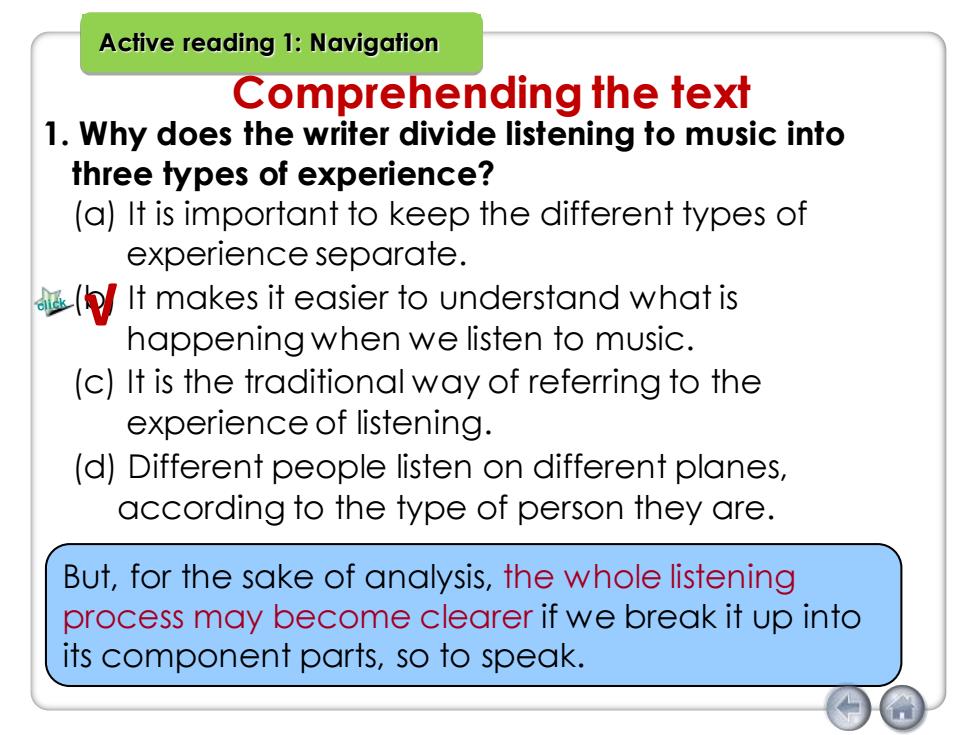
Active reading 1:NavigationTextorganisationIdentify the textual pattern
Text organisation Identify the textual pattern. Active reading 1: Navigation

Active reading 1:NavigationTextorganisationIntroductionListening to music can be dividedinto3typesofexperience.BodyIntroduction ofmain characteristicsof 3planesindividuallyConclusionWelistentomusicon all threeplanes
Text organisation Active reading 1: Navigation Body Introduction Conclusion Listening to music can be divided into 3 types of experience. Introduction of main characteristics of 3 planes individually We listen to music on all three planes

糖BodyParas.2~9Paras.2~4The sensuous planeParas.5~7TheexpressiveplaneParas.8~9The musical planeEND
Text Paras. 2~9 Body Paras. 2~4 The sensuous plane Paras. 5~7 The expressive plane Paras. 8~9 The musical plane

Activereading1:NavigationComprehendingthetextRead the passage quickly and choose the bestanswertothe questions
Comprehending the text Read the passage quickly and choose the best answer to the questions. Active reading 1: Navigation

Active reading 1:NavigationComprehendingthe text1. Why does the writer divide listening to music intothree types of experience?(a) It is important to keep the different types ofexperience separate.It makes it easier to understand what isDhappeningwhen we listen to music.(c) It is the traditional way of referring to theexperience of listening.(d) Different people listen on different planesaccording to the type of person they are.But,forthe sake of analysis,the whole listeningprocessmay becomeclearerif webreakitupintoitscomponentparts,sotospeak
Comprehending the text Active reading 1: Navigation 1. Why does the writer divide listening to music into three types of experience? (a) It is important to keep the different types of experience separate. (b) It makes it easier to understand what is happening when we listen to music. (c) It is the traditional way of referring to the experience of listening. (d) Different people listen on different planes, according to the type of person they are. But, for the sake of analysis, the whole listening process may become clearer if we break it up into its component parts, so to speak. √